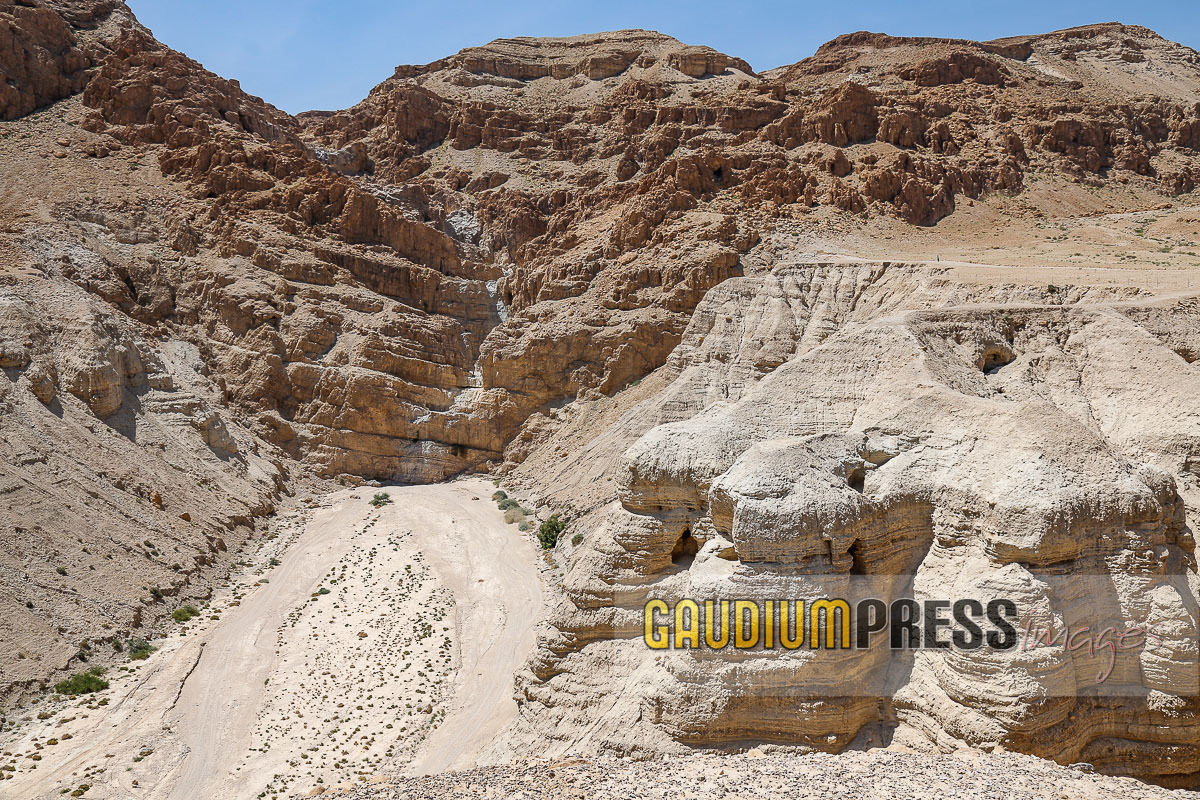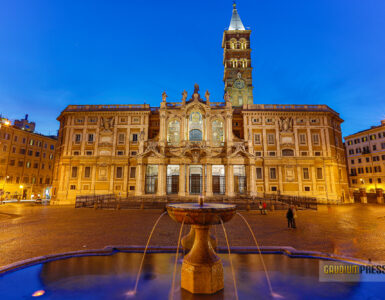Barely 10 miles south from Jericho, the ruins of this settlement-fortress of Qumram face the Northwestern Shore of the Dead Sea. Here, a community of Essens was established at the times of King John Hircanus, (134-104 BC) when several pious jews resisted the Greek influence of the period, considering it pagan and sinful, living in prayer, study and isolation.

Water, that Precious gift.
Archeological discoveries venture that the settlement once housed between 150 and 200 members. The ruins still show several of the former buildings, a dam, and in particular a set of numerous and steep ritual baths used to keep the strict Jewish laws. The dry and almost moonlike surface of the region is a constant reminder of how water here is considered a precious asset.
From the mid-left we still can see the remains of an aqueduct running down to the site.

This channel helped furnish Qumran with a valuable supply of water. Visitors can wander around the rather elaborated water collecting system, coming down to a cistern dating from the Iron Age. The community was finally destroyed by the Romans, probably as late as 73 AD, when they laid siege to the famous and majestic Masada during the Jewish revolt.

The Caves and the Manuscripts.
Kirbet Qumram was a well-known site to many European explorers since the 19th Century. Since 1947, the location is considered one of the most important archeological sites of our times, due to the accidental discovery of more than 850 Hebrew manuscripts by a Bedouin shepherd boy in nearby caves. They are known as the Dead Sea Scrolls. Across a group of 11 caves located in the vicinity, archeologists found 34 copies of Psalms, 27 copies of Deuteronomy, 24 copies of Isaiah, 20 copies of Genesis, as well as a full copy of Leviticus and a rare copy of the Temple Scroll, among many other invaluable treasures. More than 15,000 fragments from over 200 books were also found, confirming innumerable theories pending for centuries. The largest manuscript (the complete Isaiah Scroll in Hebrew, 7m. long) was authoritatively dated by around 100 BC.

Mystery
The site, a 2000-year-old village engraved in the rock, has nothing but the misty Dead Sea as a background. When the winter rains briefly wash the harsh bottom of the nearby Qumram wadi, transforming it into a ravaging torrent, the voices of a distant past, lost in the centuries forever, still come to us. Amidst the occasional dry and salty winds, the elusive Essenians seem to return, as mysterious and puzzling as the writings of the forever famous Dead Sea Scrolls…

_____________________

Tips for visiting
How to get there:
The ruins of Qumran are under the auspice of the Qumran National Park, west of the Road 90 going along the Dead Sea. The turn to the Park is some 7 km south from Beit Haarava junction.
What to Pack
Summertime Travel in Israel
– April to November:
Keep clothing loose fitting and lightweight during the summer.
Cotton and linen garments will keep you comfortable and are easily laundered.
Jerusalem and the north can be cool in the evening – pack a sweater or other lightweight warm layers.
Think about covering up against the summer from May through September.
Long shorts, skirts, and even long-sleeved shirts will help you when the sun is most intense. Don’t forget a comfortable hat and sandals for walking in the sun.
Year-round in Israel
Sunglasses and a hat. You’ll find the sunlight is stronger than what you’re accustomed to, even in the winter. A hat is also useful sun protection, year-round.
Israel’s holy places are very strict on dressing codes. Dress accordingly.
Comfortable walking shoes, sneakers and sandals.
Sunscreen and insect repellent are useful items as well.
Water bottle – it’s a dry country and you should be drinking regularly.
Winter – October to April
Winters in Israel are mild compared to North America but when the wind blows, it can get quite cold. Pack a shell or rain jacket of some kind as well as other layers – long pants, sweater, fleece jacket, hat, and gloves. You may start the day out with a jacket, by midday take it off and put it on again come evening.
Bring a jacket, a few sweaters and long pants for visits between October and April when temperatures range from the high 40s to the high 60s. Showers may fall during this period.
_________________
Recommended websites
Bibleplaces.com is a must-read before visiting the Holy Land.
Qumran (Tourist Israel) Helpful site for preparing to tour Qumran.
Qumran National Park: CHeck Israel Nature and Parks authority for schedules and admission.
Shrine of the Book (Israel Museum) A nice explanation of the scrolls including rather extensive information on the Aleppo Codex and links to exploring the scrolls online.
Qumram For a quite complete guide on the Essens.
tourstotheholyland For good travel advice to Israel.




















Add comment